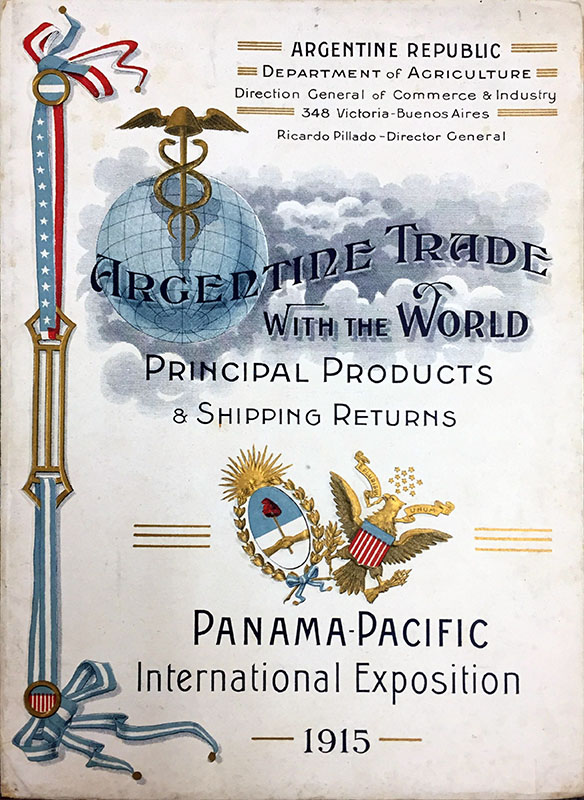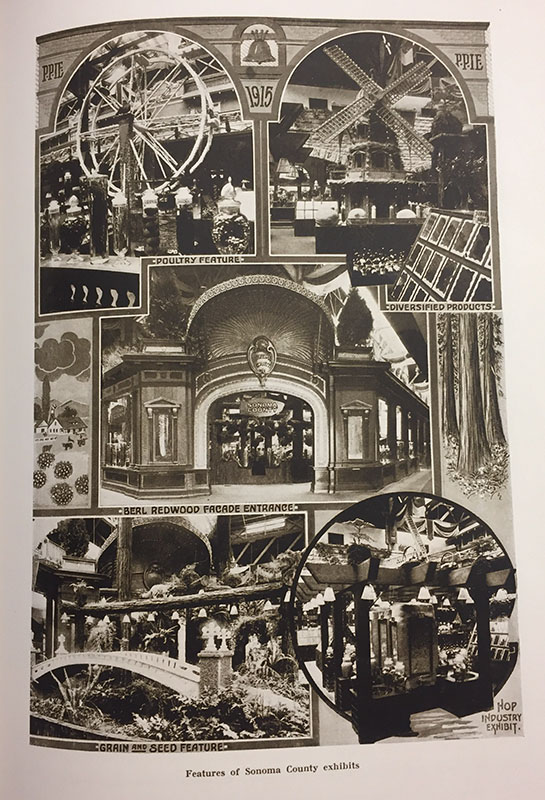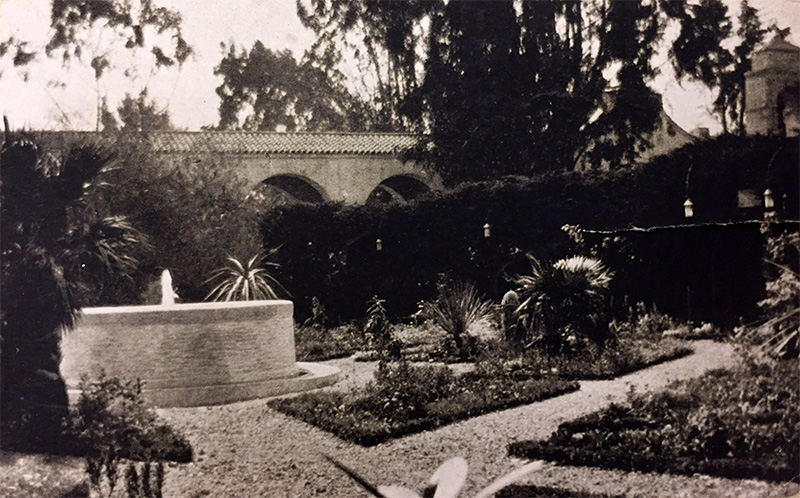Displaying the “Americas”: Industry and Aesthetics at the 1915 Panama Pacific International Exposition
by Alida Jekabson
San Francisco retains many vestiges of its involvement in world’s fairs, from landmarks such as the Embarcadero and the Palace of Fine Arts, to physical changes to the city’s landscape with the construction of Treasure Island. Support from a Decorative Arts Trust Research Grant allowed me to visit various archival collections related to Latin American and California-state exhibits and buildings at the 1915 Panama Pacific International Exposition (PPIE). This valuable opportunity provided access to information related to the conception of the fair, as well as to glean details related to the participation of several Latin American nations, including Argentina and Bolivia. The material related to the California Building at the fair also demonstrated the role of the young state and its negotiations of Spanish, Mexican, and American aesthetics in the forms of its pavilion and related exhibits of art, craft, and industry.
I was able to secure a visit to the archives of the California Historical Society (CHS) before a move out of their current space would make the archives inaccessible. The CHS files related to the 1915 fair contained records of visits from dignitaries and other donors, as well events at the California pavilion, including information about planning and investment in the fair. The numerous invitations and programs provided background regarding stakeholders and their motivations. Pamphlets produced by participating Latin American nations, such as Argentina (figure 1) and Mexico, gave me insight into the exhibitions as well as the United States-focused messaging surrounding these national pavilions.
The CHS photograph collection of the fair also contains a plethora of images and ephemera related to the involvement of Japan, which reconstructed pagodas and displayed a variety of products, including silks. Although Japan’s participation was not part of my initial research question, the overwhelming presence of documentation related to the country’s participation led me to explore further connections between orientalist stereotypes in the United States at the time of the fair relative to the reception of indigenous Latin American and Californian traditions.
The San Francisco Public Library’s Special Collections contained a 1915 issue of California’s Magazine, with articles on the fair, Arts and Crafts in California, and “Indian” art. This publication offers valuable insights into popular approaches to these subjects, as well as photo reproductions of installations and artwork at the fair (figure 2). This publication also included color reproductions of murals installed throughout the site, which are valuable in reconstructing the aesthetic program of the fair overall.
The Bancroft Library at the University of California Berkeley holds the official records of the fair. Spending time in the archives offered valuable access to files on the participation of foreign governments, including Argentina and Chile. Official photo albums in the collection contain images of architectural plans for the California Building, as well as a series of black and white photographs detailing the exhibitions mounted by different counties. Even though I could not determine the contents of the casework based on photographs alone, the variety of California fruits and vegetables on display, such as oranges, was evident. Also of importance were images of the California Building courtyard, which incorporated a water cistern from the Santa Barbara Mission (figure 3). Installed in the Mission garden in the late 19th century, it still stands in the courtyard garden. This cistern was constructed in the early 1800s as part of the Mission’s aqueduct system, and its temporary removal from Santa Barbara, and presence in San Francisco, reinforces the prominent role of California’s Spanish history within a pavilion representing the state at the fair.
Overall my visits to these various archives across the San Francisco Bay Area provided further context and information in shaping my research surrounding the role of craft, industry, and architecture within Latin American indigenous traditions at the turn of the 20th century.
Alida Jekabson is a PhD student at the University of California Santa Barbara.
About The Decorative Arts Trust Bulletin
Formerly known as the "blog,” the Bulletin features new research and scholarship, travelogues, book reviews, and museum and gallery exhibitions. The Bulletin complements The Magazine of the Decorative Arts Trust, our biannual members publication.
Click Images to Enlarge
Did you know that clicking on the images in Bulletin posts will allow you to get a closer look? Simply click on an image, and a larger version will open in a pop-up window.










